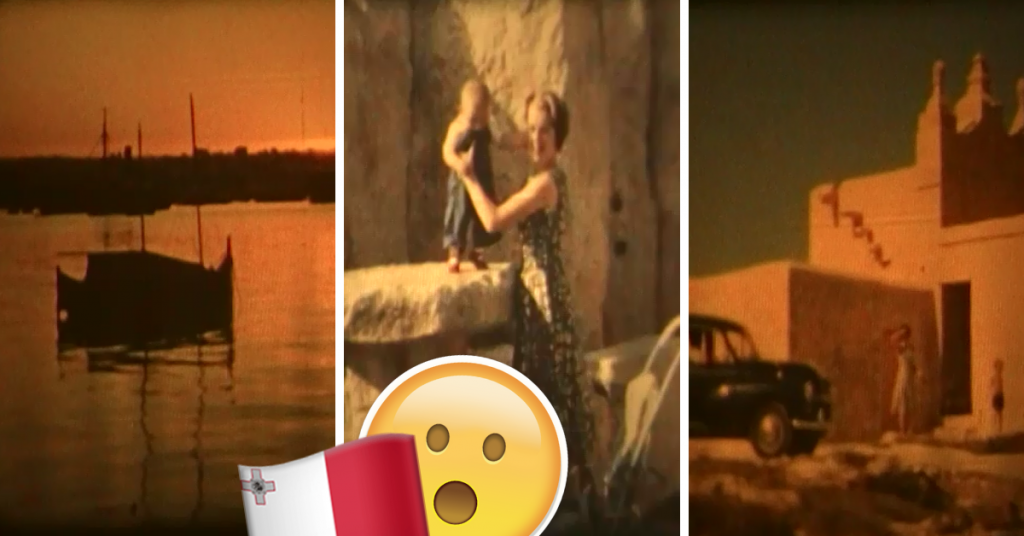WATCH: This Newfound Footage Gives Us A Glimpse Into Maltese Life In The 1960s

Throughout the past few days, Reddit user ‘JumbyApps’ has turned to the subreddit r/Malta to share some homemade, vintage footage and visuals of the island.
The user claims to have been born in Malta to British parents in 1960. They lived in Malta temporarily throughout the early 60s, due to the fact that their father was part of the Royal Navy. During this brief period, ‘JumbyApps’ documented a simpler way of life, visible now through the hazy lense of a vintage cine projector.
The Delimara Lighthouse
Originally built in 1855, the Delimara Lighthouse, which comes with an adjacent two-storey building, kept operating up until 1990. After being found in a state of disrepair, the building was handed over to Din l-Art Ħelwa for renovation, which was completed in 2008.
As of present, the lighthouse keeper’s quarters have been transformed into two apartments, which can be rented out on AirBnB.
Tal-Mirakli Windmill
The windmill was built back in 1674, by Grandmaster Cotoner, on the foundations of an old church. Its original use was retained up until 1889, after which point it was used as a blacksmith’s forge.
It was restored in 1991 and is preserved by the local council. Whilst it currently does not serve any particular use, it is often the venue for Holy Week displays.
Carnival Celebrations
Having been a part of Maltese culture since the rule of Grandmaster Piero de Ponte in 1535, Carnival is undoubtedly one of the most intrinsic aspects of our cultural identity.
The Grand Harbour & Sliema Creek
This excerpt of footage contains cutaways of both Sliema Creek and the Grand Harbour, presumably due to some sort of technical fault.
Sliema Creek is practically unrecognisable, what with high-rise buildings and apartments sprouting up instead of fields and rubble walls.
The Rotunda of Mosta
Built in 1860, the Rotunda of Mosta was constructed around an older church, called Ta’ Żiri, after the latter had become too small to cater for the town’s population.
Mosta was prone to aerial bombardment throughout World War II, and on 9th April 1942, a bomb pierced through the dome and entered the church. Luckily however, this did not explode, and was later defused by the Royal Engineers Bomb Disposal.
Holy Statue Holding A Scapular
The cloth being held by the statue might look like a handbag at first glance, but it’s actually a scapular, or a ‘labtu’ in Maltese. This accessory was worn by pious Christians as a sign of devotion. A scapular was usually made up of two squares of cloth, connected by two strings – so that one square rests on your chest and the other on your back.
Follow r/Malta for more vintage visuals of our island.